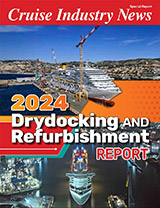Despite the plummeting Brazilian economy, cruise lines that are in the South American market say bookings are solid for 1999, but quickly add that what happens next season is anybody’s guess.
The North American-based cruise lines that sail in South America during the winter but draw their passengers from North America and Europe are not as concerned.
At press time, the Brazilian real had dropped 34 percent against the dollar since Brazil fast devaluated its currency Jan. 13.
“I think everybody is trying to figure out what to do,” said Bruce Nierenberg, new president and CEO of Premier Cruises.
Premier’s Rembrandt is chartered through tour operators for seven-day South American sailings from mid-December to early April. The passenger makeup is 100 percent South American, Nierenberg said, adding that some customers have had to make final payments in higher terms so that the real could reach the value of the true market price.
A Premier spokesperson also reported that the 768-passenger Seawind Crown “will be positioned permanently in South America” following its May 9 sailing out of Aruba. The company would not discuss the ship’s itinerary or say which tour operators the ship will be booked through.
Costa Crociere has also reported near capacity bookings for the 1999 season. Both the 800-passenger Alkru and the 770-passenger Marina sail in the region during winter months. A spokesperson said that no reservations had been canceled, but that Costa was not sure if the ships will return to South America next season.
Mediterranean Shipping Cruises (MSC) deployed the Rhapsody this winter (from the beginning of December to the end of February) and opened the South American market to European passengers for the first time. Antonio De Rosa, MSC’s vice president of sales, marketing and operations, noted that 11 cruises with a total passenger capacity of 8,800 were filled mostly with Brazilian (57 percent) and Argentinean (30 percent) passengers. Europeans accounted for 13 percent of the passenger makeup.
“When the big devaluation of the real was exploding, we had already achieved 85 percent of the total bookings,” De Rosa said. “Of course, the devaluation has almost stopped the level of the reservations and we have faced a few cancellations.”
As for the year 2000, De Rosa said that it was unclear how the season would evolve. “I personally remember from my own experience when I used to sail in South America 20 years ago, that at that time the inflation had a range of 1,200 percent yearly and still there were Brazilian people who could afford a cruise.”
Ron Batalha, vice president of international marketing and sales at Norwegian Cruise Line, also said that Brazilians were used to currency gyrations and did not expect to see any significant drop in demand for the company’s cruises (in the Caribbean, Alaska, Europe). However, in the short run he had seen a softening in demand for January and February cruises.
Meanwhile, NCL and other large North American cruise lines, such as Princess Cruises, which sail ships in South America in the winter — should not feel the impact of the devaluation because their customer base is not derived from the South American market, but from North America and Europe.



